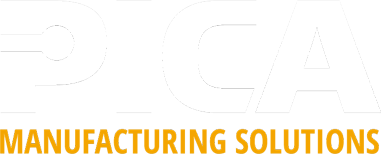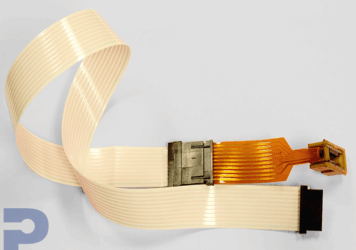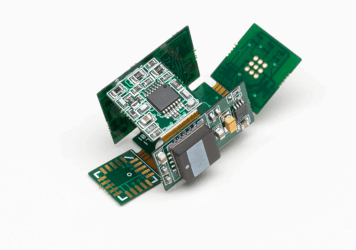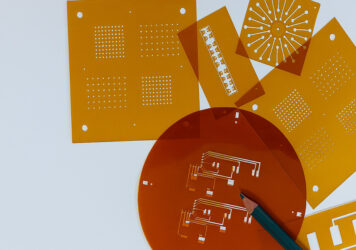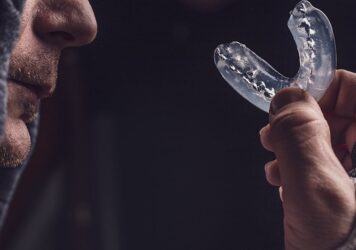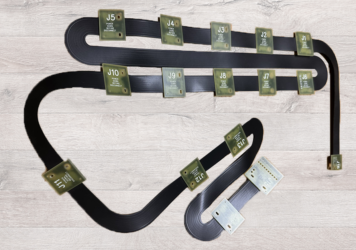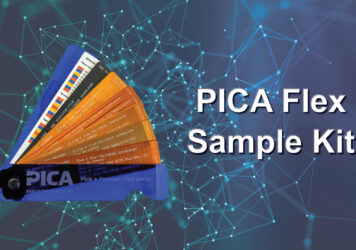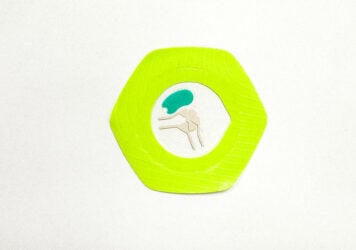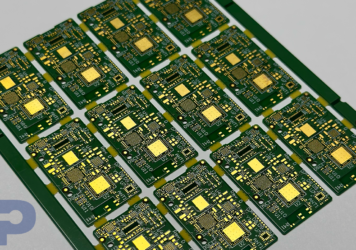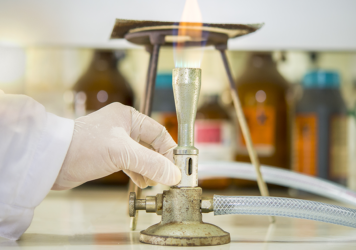Advanced Surface Finishes for Enhanced PCB Performance
FlexPros2025-08-26T15:29:58+00:00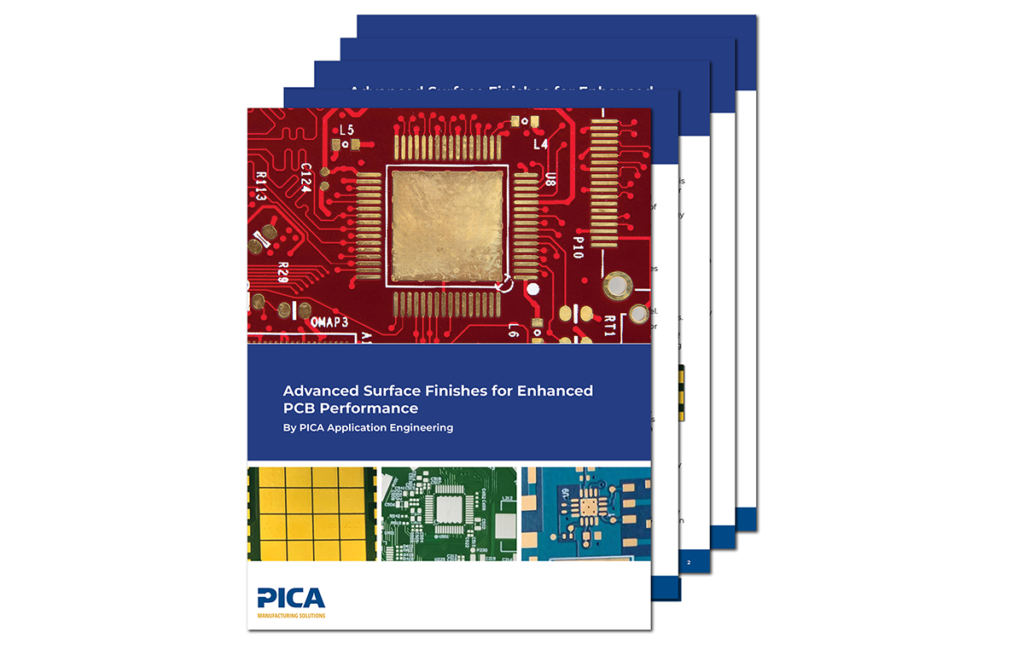
This blog is an introduction to a white paper that contains additional information on surface finishes including: Immersion Silver or Tin, OSP (Organic Solderability Preservatives), HASL (Hot Air Solder Leveling), Carbon Ink, and Combination Finishes (e.g., Hard Gold/OSP, Soft Gold/OSP, Gold Immersion/OSP). Click the button below to request the full white paper download to get the additional information.
Introduction
At PICA Manufacturing Solutions (PMS), we understand the critical role that surface finishes play in ensuring the reliability, performance, and longevity of printed circuit boards (PCBs). Surface finishes are applied to exposed copper of a PCB to protect them from oxidation and to provide a solderable surface when connecting components. This white paper explores various PCB surface finishing techniques including electroplating, electroless plating, and immersion methods, highlighting their processes, applications, and benefits.
Surface Finishing Techniques
Electroplating
(Electrolytic or Galvanic Plating)
Electroplating involves the deposition of a metal onto the conductors of a PCB in an electrolytic bath. This method requires a direct electric current to facilitate the transfer of metal ions from an anode to a cathode, typically the PCB itself. Key features and benefits of electroplating include:
• Controlled Plating Thickness: Allows precise control over the thickness of the metal deposition, essential for applications requiring robust physical properties such as multiple insertion connectors and spring-loaded contacts.
• Metals Used: Commonly used metals include copper, solder (Sn/Pb), gold, and tin.
• Applications: Especially beneficial for hard gold plating used in high-wear areas where repeated connection and disconnection occur.
Electroless Plating
Electroless plating does not require electrical power. Instead, it uses a chemical catalyzing agent to initiate the deposition of metal ions onto the PCB. This method can plate both conductive and non-conductive surfaces, making it versatile for various applications. Characteristics include:
- Uniform Plating: Achieves a uniform layer of metal across complex geometries without the need for electrical connection points.
- Metals Used: Suitable for a range of metals including copper, gold, and nickel.
- Typical Applications: Commonly used for nickel underplating before gold plating to provide a barrier layer and enhance adhesion of subsequent layers.
Immersion Plating
Immersion plating is a displacement reaction process that does not require a catalyzing agent. It involves dipping the PCB into a solution containing a metal salt. The metal from the solution displaces a less noble metal on the substrate, adhering in a thin layer. Key aspects include:
Simplicity and Speed: Relatively straightforward and quick compared to other plating methods.
Metals Used: Typically used for gold, silver, and tin.
Applications: Well-suited for achieving thin, protective coatings as seen in ENIG (Electroless Nickel Immersion Gold) processes.
Hot Air Solder Leveling
This process involves coating the PCB with molten solder (typically a tin-lead alloy or a lead-free alternative such as tin-copper) and then leveling it off with hot air knives to create a smooth, even surface.
- Excellent wetting: The main benefit of HASL is its excellent wetting properties during the soldering process, ensuring good solder joints and reliable connections.
- Most Cost effective: It is also one of the most cost-effective surface finishes available.
- Typical applications: Include general electronics that do not require the highest precision in surface finish.
Specific Surface Finishes
Electroless Nickel Immersion Gold (ENIG)
ENIG is a two-layer metallic coating consisting of electroless nickel and immersion gold. It offers excellent corrosion resistance and electrical properties. Benefits include:
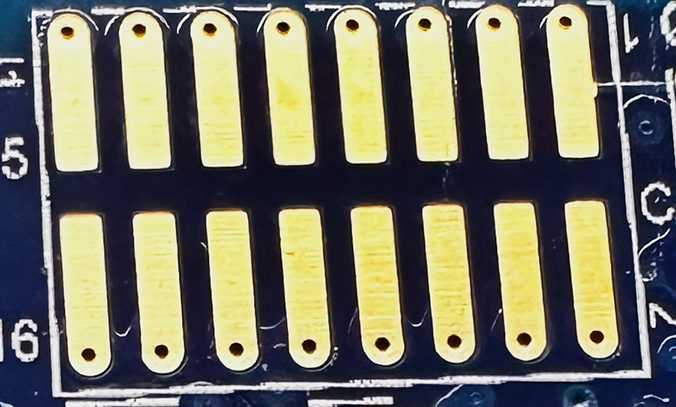
- Barrier Properties: Nickel acts as an effective barrier to prevent diffusion between copper and gold, essential for maintaining the integrity of the solderable surface.
- Smooth Finish: Provides a flat surface that is beneficial for fine-pitch surface mount technology (SMT).
- No thermal shock or stress on parts. This helps maintain dimensional stability for complex parts like Flex and Rigid-Flex.
- Very common finish that provides many benefits at a reasonable cost.
Electroless Nickel Electroless Palladium Immersion Gold (ENEPIG)
ENEPIG provides an additional layer of palladium between the nickel and gold layers, enhancing the overall robustness and reliability of the finish. This three-layer coating is particularly effective in preventing black pad syndrome, a critical consideration in high-reliability electronics. It is also a common choice for wire bond applications where additional thickness of soft metals are required but Electroplating connections are not easily made.
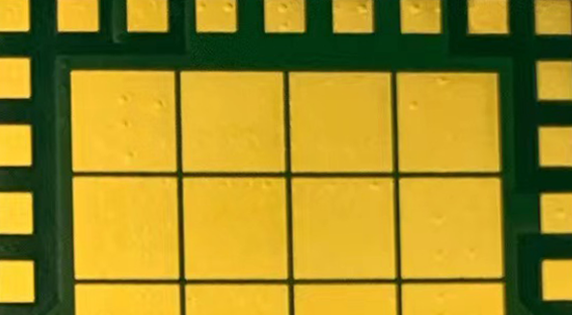
Soft Gold Plating
Soft gold plating typically involves a layer of pure gold, which preserves the surface’s softness and flexibility. This purity is highly beneficial for applications that involve thermal cycling or require gold wire bonding. A nickel barrier is typically plated between the copper substrate and the gold to prevent diffusion and enhance adhesion. However, thick gold coatings can weaken solder joints and are generally not recommended for soldering applications.
- Applications: Predominantly used in the semiconductor industry and applications demanding flexibility and repeated contact
- Cost: Soft gold plating can be less expensive than other soft deposits like Electroless Nickel Electroless Palladium Immersion Gold (ENEPIG). It is achieved through electrolytic techniques, which require an electrical connection to facilitate plating. This controlled current process allows for higher thicknesses than those achievable through catalyst-driven or ion exchange techniques.
Hard Gold Plating
Hard Gold Plating features a thick layer of a gold-cobalt alloy over a nickel underplate. This combination excels in electrical conductivity and corrosion resistance, making it essential for high-reliability sectors. The alloy also offers excellent wear resistance while maintaining reasonable solderability. This finish is typically used for components such as touch pads or contacts that undergo thousands of cycles.
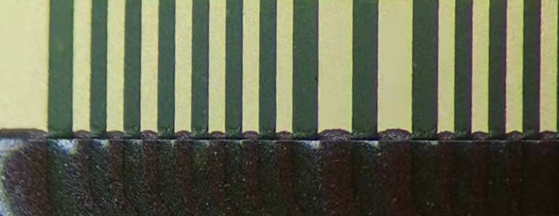
Applications: Ideal for aerospace, medical devices, telecommunications, and high-end electronics where performance is paramount
Cost: Hard gold plating is more expensive than other gold coatings due to its pure gold content. However, the cost is justified by the critical benefits it provides in demanding applications.
Direct Gold Plating
Direct gold plating involves depositing gold directly onto a substrate without an intermediary metal layer, providing a thin, pure gold coating.
- Benefits: This method ensures uniformity and precision in gold thickness, reduces processing steps to enhance cost-effectiveness, and allows for precise control over properties, which is crucial for high-precision applications.
- Applications: Direct gold plating is used in bonding wires, MEMS devices, microelectronics, and telecommunications, where the integrity and performance of gold coatings are essential.
- Cost: Direct gold plating is generally more cost-effective than multi-layer plating methods, as it reduces material usage and streamlines the manufacturing process.
- Caution: Direct gold plating without a nickel barrier can lead to the diffusion of gold into copper, especially under thermal stress. This results in a decrease in the thickness and effectiveness of the gold layer over time.

This blog is an introduction to a white paper that contains additional information on surface finishes including: Immersion Silver or Tin, OSP (Organic Solderability Preservatives), HASL (Hot Air Solder Leveling), Carbon Ink, and Combination Finishes (e.g., Hard Gold/OSP, Soft Gold/OSP, Gold Immersion/OSP). Click the button below to request the full white paper download to get the additional information.
